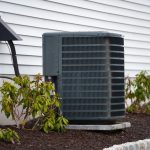In the fast-paced world of commercial operations, energy efficiency has become a critical factor for businesses aiming to cut costs and reduce their environmental footprint. Among the most energy-intensive systems in commercial buildings are Heating, Ventilation, and Air Conditioning (HVAC) units. Improving the efficiency of these HVAC systems not only leads to substantial energy savings but also ensures a comfortable indoor environment for occupants. In this article, we will explore various strategies to enhance HVAC energy efficiency, paving the way for a more sustainable and economical future.
Understanding HVAC Energy Efficiency
Before diving into the strategies, it’s essential to familiarize ourselves with the industry jargon related to HVAC energy efficiency. Two vital metrics are widely used for this purpose:
- Seasonal Energy Efficiency Ratio (SEER): SEER measures the cooling output (in British Thermal Units – BTU) divided by the electricity usage (in KiloWatt Hours). A higher SEER rating indicates a more energy-efficient air conditioning unit.
- Energy Efficiency Ratio (EER): Similar to SEER, EER represents the ratio of cooling output to electricity usage. However, EER is measured under strict laboratory conditions and doesn’t consider seasonal variations.

Additionally, when it comes to heat pumps, the Heating Seasonal Performance Factor (HSPF) comes into play. HSPF indicates the heat pump’s efficiency, considering its ability to cycle in both directions for both heating and cooling purposes. The higher the HSPF value, the more energy-efficient the HVAC unit.
Strategies To Improve HVAC Energy Efficiency
Retrofitting For Enhanced Performance
One of the most effective ways to improve energy efficiency is retrofitting older HVAC systems, especially in large commercial setups. Retrofitting can lead to annual energy cost savings of up to 35% by either replacing or adding components. Retrofitting not only optimizes energy consumption but also enhances comfort by maintaining consistent temperature and humidity levels throughout the building. Both heating and cooling systems can benefit from retrofitting, and some common retrofit options include:

- Replacing the compressor with a more energy-efficient model.
- Adding condenser fan controls to regulate fan speed based on cooling needs.
- Implementing demand-controlled ventilation to adjust air intake according to occupancy levels.
- Incorporating air-side economizers, which utilize cool outside air to reduce the load on the HVAC system.
Programmable Controls And Smart Thermostats
Automated systems that control thermostats can significantly improve energy efficiency by optimizing temperature settings based on occupancy patterns. These smart thermostats can adapt to changing conditions and automatically adjust the indoor temperature, ensuring optimal comfort while minimizing energy wastage. By using programmable controls and smart thermostats, businesses can save energy and costs without compromising on comfort levels.
Investing In Energy-Efficient Air Conditioners
When considering a replacement for an existing air conditioning unit, businesses should prioritize models with high SEER ratings (14-18, at the time of writing this article). These units offer superior energy efficiency compared to older models, leading to substantial energy savings over time. Additionally, selecting products certified with the Energy Star label ensures that they meet stringent energy efficiency standards, further contributing to reduced environmental impact and long-term cost savings.
Vigilant Maintenance For Optimal Performance
Regular maintenance is paramount to ensure that HVAC systems function optimally and efficiently. It is essential to schedule periodic maintenance appointments, especially at the beginning and end of the heating and cooling seasons. Proper maintenance includes cleaning filters, checking refrigerant levels, inspecting ductwork, and lubricating moving parts, among other tasks. Regular upkeep not only improves energy efficiency but also extends the lifespan of the HVAC equipment.
Regularly Changing Air Filters
Clogged air filters can strain HVAC systems, leading to increased energy consumption as the unit needs to work harder to push air through the obstructed filter. Moreover, air filters play a vital role in protecting the HVAC system’s internal components from dust and debris, preventing potential damage. By regularly changing air filters, businesses can ensure better air quality, improve energy efficiency, and reduce maintenance costs in the long run.

Power Down Electronics And Reduce Heat Load
A considerable amount of energy is wasted through electronic devices that continue to draw power when not in use. Encouraging employees to power down computers, machinery, and media systems when they are not needed can lead to significant energy savings. Additionally, reducing the heat load generated by electronic devices contributes to lower cooling requirements, thereby easing the burden on the air conditioning system and further enhancing energy efficiency.
Switch To Variable Refrigerant Flow (VRF) HVAC Systems
Variable Refrigerant Flow (VRF) HVAC systems have gained popularity in recent years due to their superior energy efficiency and ability to heat and cool different parts of the building simultaneously. These systems operate using tandem or scroll compressors, both of which offer energy-efficient advantages. Tandem compressors, with multiple compressors working together, distribute the workload and extend the compressors’ longevity. On the other hand, scroll compressors utilize a more energy-efficient refrigerant, reducing overall energy consumption.
Educate Staff About HVAC Energy Efficiency
Creating awareness among employees and tenants about the importance of energy conservation can foster a culture of sustainability within the organization. By educating staff about simple energy-saving practices, businesses can empower their workforce to actively participate in reducing energy consumption. Regular training sessions, energy-saving tips, and periodic reminders can go a long way in instilling energy-conscious habits among employees.
Conclusion
HVAC energy efficiency is a critical aspect of running a sustainable and cost-effective commercial operation. By implementing the strategies mentioned above, businesses can significantly reduce their energy costs while contributing to a greener future. Retrofitting existing systems, investing in energy-efficient air conditioners, and employing programmable controls are among the effective measures to optimize HVAC energy efficiency. Regular maintenance, timely filter replacements, and reducing heat load through power management further enhance energy savings. Switching to VRF HVAC systems and fostering a culture of energy consciousness through employee education solidify a business’s commitment to sustainability and a brighter tomorrow. By taking action today, businesses can lead the way toward a more energy-efficient and environmentally responsible future.






GIPHY App Key not set. Please check settings